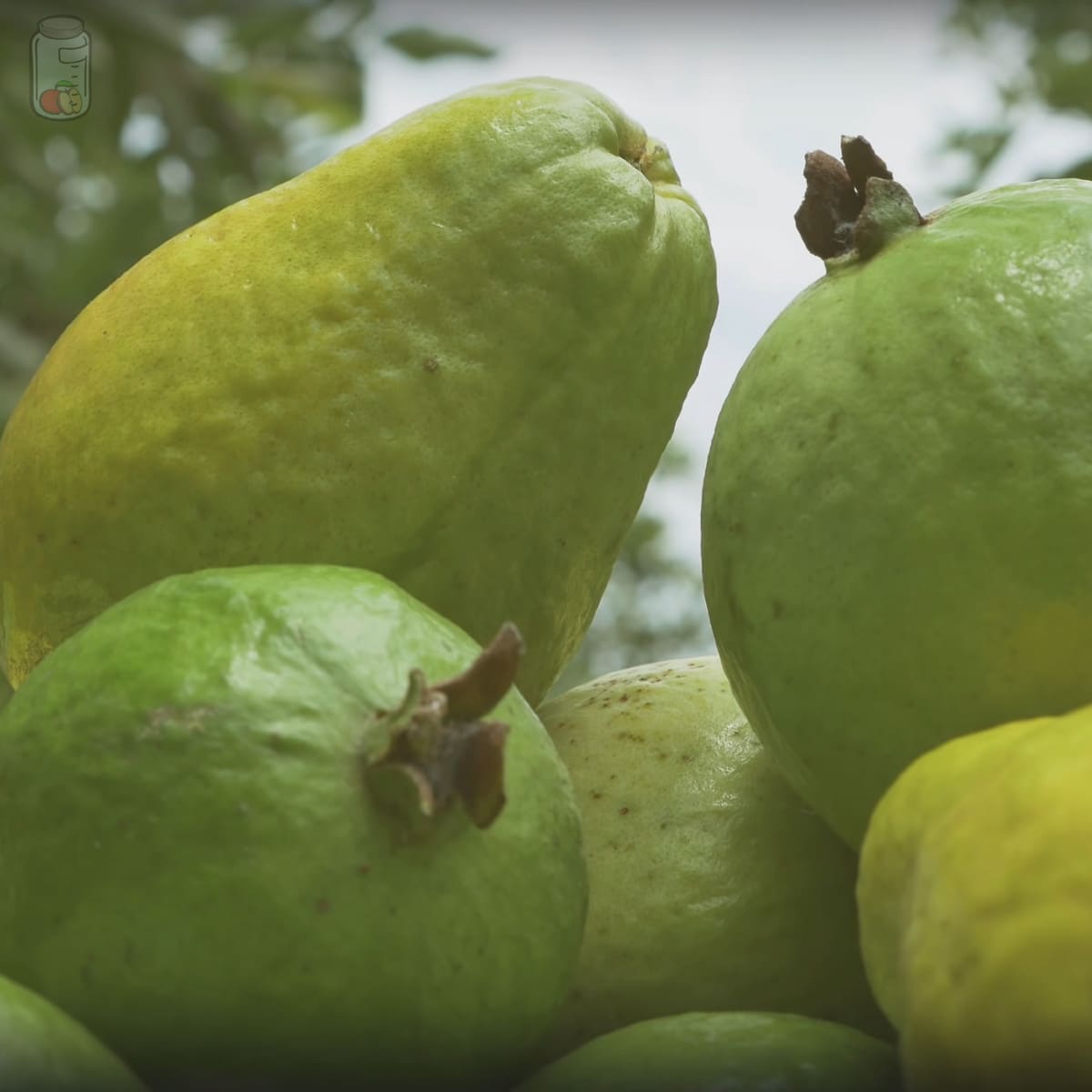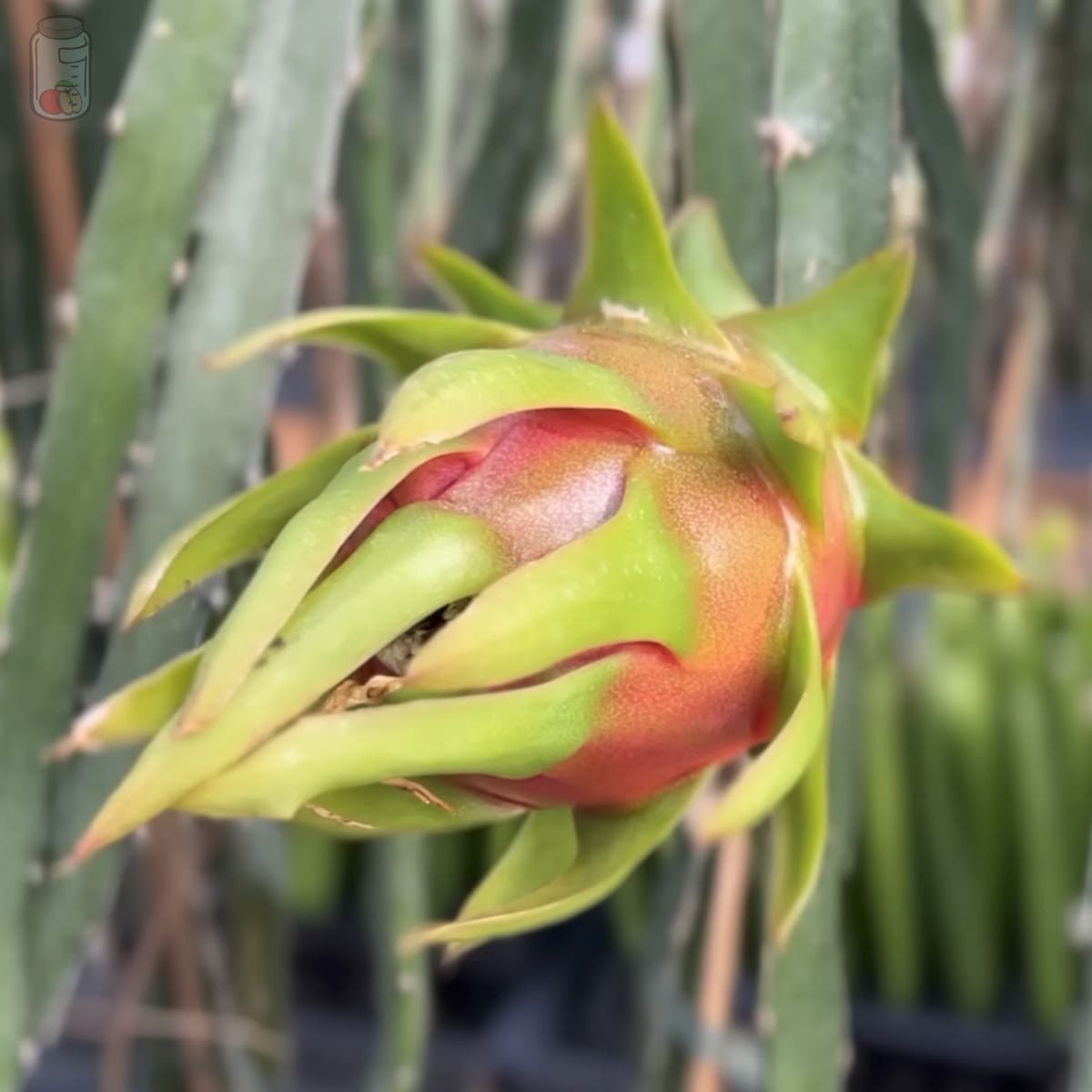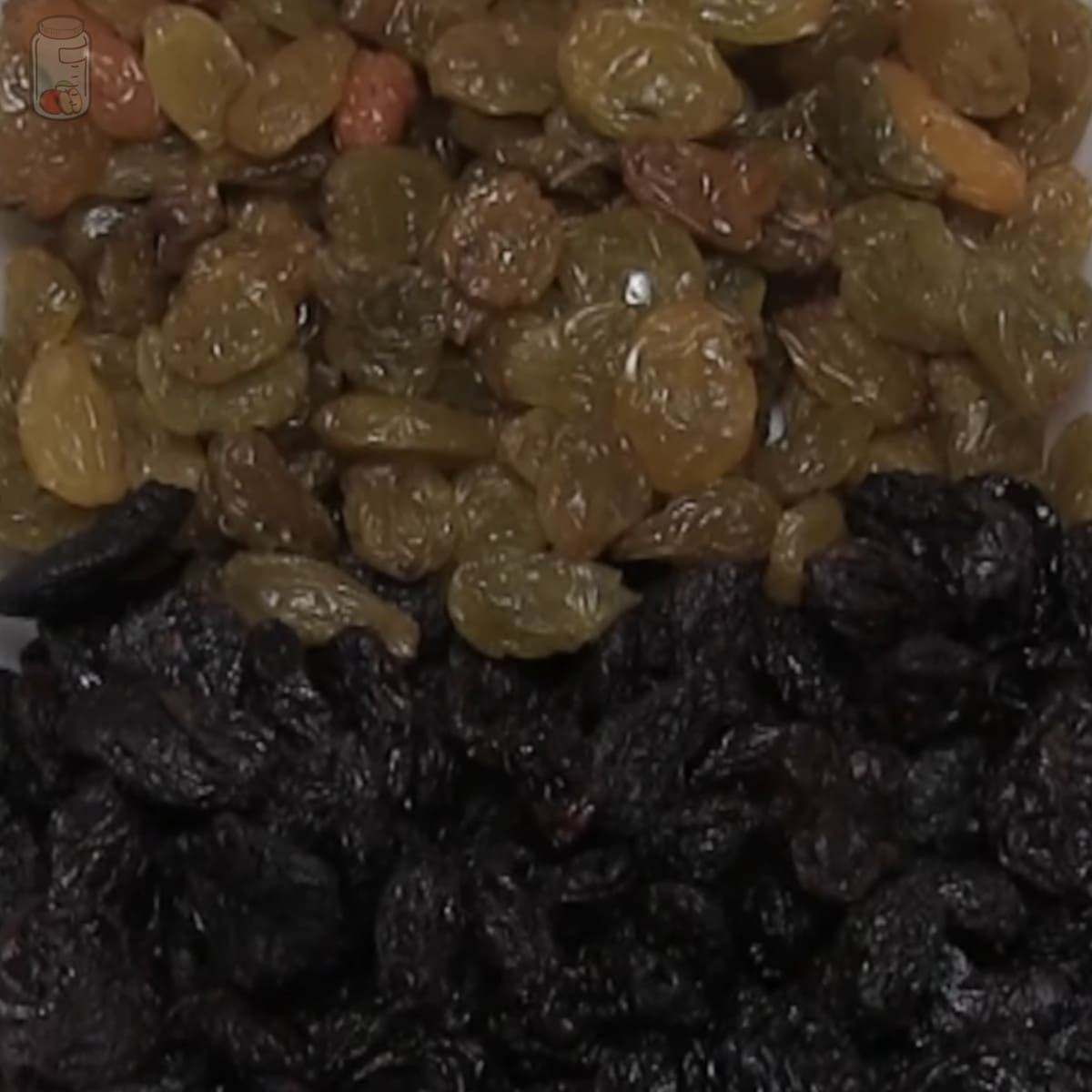Tamarind is a tropical fruit with a sweet and sour flavor that has spread to various parts of the world, especially in Africa, Asia, Oceania, and South America. Anyways, if you have this fruit at home and want to save it, I will teach you how to store tamarind properly.
If its shell is intact, keep tamarind at room temperature for 1 to 3 weeks. Then, you can store it in the fridge for up to 6 months, and it can reach a year in the freezer.

To learn how to preserve tamarind the right way, continue reading.
Table of Contents
How to preserve tamarind at room temperature
The only way you can store tamarind at room temperature is if the peel is intact, although if it has a small tear, but the pulp is not visible, you could still save it.
You must put the tamarind inside an airtight container or bag and leave it in a dark, very cool place that stays dry since moisture could rot the tamarind quickly.
Tamarind should not be washed with water. Instead, you can remove the dirt with a soft-bristled brush or a clean dishcloth. Following all these tips, the tamarind can be at room temperature for 1 to 3 weeks. [1]
The shelf life will depend on the level of maturity of the fruit at the time of harvest; the more mature the tamarind, the less you can keep it at room temperature. And if the shell is very torn, it also reduces its duration.
How to keep tamarind in the fridge
One way to preserve tamarind for a long time, considering whether its shell is intact, is to store it in the refrigerator.
Additionally, once you peel the tamarind, keep it cold so that its pulp does not damage so quickly.
Store the whole tamarind in the fridge
You should place the whole tamarind inside an airtight container or bag and place the storage date (you can write it directly on the container or by sticking a label or a piece of tape).
But before that, you will have to ensure that the tamarinds are not wet or very dirty, so clean them first, but remember, do not wash them.
Put the container in a relatively cold part of the fridge (usually the bottom), and you can keep the tamarind in the refrigerator for six months.
How to store tamarind pulp in the fridge
In case you have extracted the pulp of the tamarind, or the shells are broken, you should proceed as follows:
- Step 1: Clean and peel the tamarinds.
It is not necessary to use water to clean them; just use a soft bristle brush or a dishcloth. To peel them, hit them slightly with a bit heavy object or whip the tamarins against the table and remove the shell with your fingers.
- Step 2: Put the tamarind pulp in an airtight container.
It would be better to have an airtight glass container since this material preserves food for a long time. Still, an airtight plastic bag or container is handy.
- Step 3: Enter the storage date.
On the container, put the date of storage of the tamarind pulp.
- Step 4: Store the tamarind pulp in the fridge.
Again, try to place the container in the coldest part of the refrigerator. That way, the tamarind pulp will remain in good condition for 1 to 3 weeks.
How to freeze tamarind
Here you have the instructions to freeze the tamarind.
- Step 1: Clean and peel the tamarinds.
With a soft-bristled brush or kitchen cloth, clean the tamarinds before breaking the shell and peeling them, so the pulp will not get dirty. Remove the internal veins as well.
- Step 2: Wrap the tamarind pulp with plastic film.
To avoid frost burns, you can make a row with the tamarind pulp and wrap it with transparent plastic.
- Step 3: Place the tamarind pulp in a sturdy container.
In this case, it is better to use plastic containers or bags which are resistant enough to be inside the freezer for a long time.
- Step 4: Write down the storage date.
Control the storage date by setting up the day you start this process.
- Step 5: Store the tamarind pulp in the freezer.
In this way, you can freeze the tamarind pulp for a year. Then, when you want to thaw the tamarind, you have two options.
The first and fastest is to leave the tamarind at room temperature for 45 minutes to an hour.
The second option is slower but the safest and smartest alternative: take the tamarind out of the freezer one night before and transfer it to the refrigerator, so the thawed tamarind can be there for another week, or you can refreeze it.
In fact, if you always thaw the tamarind pulp in the fridge, you can refreeze it as many times as you want. However, the longer the tamarind spends in the freezer, it will lose flavor.
How to preserve tamarind paste
Tamarind paste is what is known as the extraction of the pulp to obtain a seedless mixture. At the commercial level, this is usually sold as tamarind pulp since it is practically ready to cook with it.
To prepare and store it correctly, you will have to do the following:
- Step 1: Clean and peel the tamarinds.
Use a soft bristle brush or dishcloth to clean the tamarinds before breaking the shell and peeling them. That way, the pulp will not get dirty.
- Step 2: Soak the tamarind pulp.
You have two options: the first is to pour the tamarind pulp over a bowl of water, cover it and let it soak overnight in the fridge; The second and quickest consists of soaking the pulp in hot water for half an hour. You will need two cups of water every 0.5 kg (1.1 lbs).
- Step 3: Prepare the tamarind paste.
Try to squeeze the pulp to squeeze the seed with your fingers or use a fork. Then strain the mixture and cook it until it boils to eliminate all the bacteria that may have formed and wait for it to cool before storing it.
- Step 4: Pour the tamarind paste into airtight containers.
If you want to keep the paste in the fridge, I advise you to use glass jars with an airtight lid that have been sterilized and are completely dry at this point.
But if you are going to freeze them, it is best to use a container or bag, which is also airtight and resistant to the freezer.
To sterilize glass jars with their lids, pour them into a pot of water and let them boil for 10 minutes.
- Step 5: Set the preparation date.
Write down the storage date to control storage.
- Step 6: Save the tamarind paste.
If you store the tamarind paste in the coldest area of the fridge, it can keep for 1 or 2 weeks. On the other hand, if you freeze the tamarind paste, it will last between 10 and 12 months.
How to preserve tamarind juice
You can store tamarind juice in two ways.
The first would be to keep it in a container with a lid, in the coldest part of the fridge, and without ice; otherwise it will melt, and the water will dilute the flavor. Tamarind juice can last for 5 to 7 days in the fridge.
The second option is to preserve tamarind juice for much longer, where you can do the following.
- Step 1: Pour the tamarind juice into molds or bags.
I would recommend you use an ice cube tray. However, you could also pour it into a sturdy and airtight container.
- Step 2: Perform the first freezing of the juice.
Put the ice cube tray in the freezer for four hours or until the juice is completely frozen.
- Step 3: Bag the tamarind juice.
Once the juice freezes, unmold and transfer the cubes to a ziplock bag.
You can also freeze tamarind juice in a sturdy container, but it is not ideal as you will face problems when thawing.
- Step 4: Place the date of preparation of the juice.
On the bag or container, write the date using a marker, but if you do not want to scratch them, you can put a label or a piece of tape and write down the date.
- Step 5: Store the Chinese tamarind juice in the freezer.
In this way, you can freeze tamarind juice for a year. Then, when you want to thaw it, let it in the fridge overnight, where it last 2 or 3 more days. Still, if you thaw the tamarind juice at room temperature, you must consume it the same day.
How to preserve tamarind jam
Thanks to sugar, tamarind jam is a delicious recipe that can be kept for a long time. To prepare it, you will need 60% of the pulp’s weight in sugar, half a cup of lemon juice, and two cups of water.
- Step 1: Clean and peel the tamarinds.
Use a soft-bristled brush or a kitchen cloth to clean the tamarinds before breaking the shell and peeling them, thus preventing the pulp from getting dirty. Remember, remove the internal veins.
- Step 2: Soak the tamarind pulp.
To make it easy for you to remove the seeds and obtain the tamarind pulp, you must soak them overnight in the fridge in a container with a lid.
A quicker alternative is to soak the tamarind pulp in hot water for half an hour. For this, you will take three cups of water.
- Step 3: Strain the tamarind.
Try pulling out the seeds with your fingers, fork, or grinder. Then strain the mixture.
- Step 4: Prepare the tamarind jam.
Pour the tamarind mixture, sugar, and lemon juice into a thick-bottomed pot. Cook over medium-low heat and stir constantly with a tablespoon of wood until you get the right consistency.
- Step 5: Fill the jars with the tamarind jam.
You will need sterilized glass jars with screw caps or an airtight lid to store the tamarind jam.
Please wait for the jam to cool a little before passing it to the jars. Also, leave one finger unfilled. But if you freeze it, just pour it into freezer-resistant containers or bags.
- Step 6: Seal the tamarind jam under a vacuum.
In a large pot, you will place the jars with the tamarind jam on a cloth or grid, so they will not collide with the pot, and if you separate them enough, they will not collide with each other either.
Add water to cover the jars, although you can also fill them until you almost reach the edge of the lid. Then, over maximum heat, wait until it starts to boil, then lower the heat and cook for 20 or 30 minutes for the pressure emptying.
Turn off the stove and wait until the water cools a little before removing the jars. These should be left away from light until they cool completely, which can take between 6 and 12 hours.
If you plan to freeze the jam, you can skip this step.
- Step 7: Set the preparation date.
Write the date of preparation on a label and stick it to the jar or container or put tape and write the date on it.
- Step 8: Save the tamarind jam.
Jars sealed with tamarind jam will keep at room temperature for 10 to 12 months, but they will only last 3 or 4 months as soon as you open them.
However, if you live in a hot area with weather exceeding 77°F (25°C), keep the sealed tamarind jam in the fridge for 12 to 18 months, reduced to 6 months if you open it.
If you decide to freeze tamarind jam, it can last 2 to 5 years.
How to preserve tamarind chutney
For the preparation of this sauce, you will require 100 grams of tamarind paste, 100 grams of panela, 50 grams of sugar, two tablespoons of oil, a teaspoon of ginger powder, a teaspoon and a half of cumin grain or powder, a teaspoon of fennel seeds, and other species that you like, more salt to taste.
- Step 1: Toast the seeds and grains and then grind them.
For all the species that are in grains and seeds, toast them a little in a pan. Wait for them to cool before grinding them with a mortar’s help.
- Step 2: Prepare the tamarind chutney.
Grate or chop the panela into small pieces, then pour it into a pot with 600 milliliters of water and the tamarind paste. Please turn on the stove over medium-high heat; add the rest of the ingredients when it boils. But wait until the panela is wholly diluted to add the sugar. Cook for five more minutes and turn off the heat when it thickens.
- Step 3: Transfer the tamarind chutney to a jar.
Wait for the chutney to cool before transferring it to a glass jar with an airtight or screw cap.
- Step 4: Write down the preparation date.
Write the date of preparation on a label and then attach it to the bottle. You can also tape it and put the date on it.
- Step 5: Save the tamarind chutney.
Store tamarind chutney in the coldest part of the fridge for up to 1 year. I advise you not to start consuming it until at least three months have passed, so all the flavors will have blended well.
How long does tamarind last?
| Product | Duration |
| Whole tamarind at room temperature | 1 – 3 weeks |
| Whole tamarind in the fridge | 6 months |
| Tamarind pulp in the fridge | 1 – 2 weeks |
| Frozen tamarind pulp | 1 year |
| Tamarind paste in the fridge | 1 – 2 weeks |
| Tamarind paste in the freezer | 10 – 12 months |
| Tamarind juice in the fridge | 5 – 7 days |
| Tamarind juice in the freezer | 1 year |
| Tamarind jam at room temperature (sealed) | 10 – 12 months |
| Tamarind jam at room temperature (open) | 3 – 4 months |
| Tamarind jam in the fridge (sealed) | 12 – 18 months |
| Tamarind jam in the fridge (open) | 6 months |
| Tamarind jam in the freezer | 2 – 5 years |
| Refrigerated tamarind chutney | 1 year |
How to know if the tamarind spoiled?
You can determine if the tamarinds got terrible at first sight if they have white or black spots or lint since it is a sign that they developed mold and are completely contaminated; therefore, you should not eat them.
It is also not good for tamarinds to have a strange or foul smell or taste since that indicates that their shelf life has ended, and they must be thrown away.
If the tamarinds became viscous, watery, wet, rotted, or poorly stored, discard them.
What is the best way to preserve tamarind?
If the tamarinds are fresh and the peel has no holes, you can keep them very well at room temperature. Still, it is better to store the tamarind in the fridge for long-term conservation.
It is better to keep tamarind pulp in the fridge since it can lose flavor in the freezer. Fresh tamarind with peel should not be frozen.
The tamarind paste is preserved well inside the freezer since it lasts long. However, it can still withstand many days in the fridge and is the perfect base for the varied recipes that require this fruit.
Tamarind jam can keep very well at room temperature if it is sealed, but it is best to keep it refrigerated as soon as you open it.
In the case of tamarind chutney, it can stay in the fridge for a long time.
I always like to complement my lectures with other posts, so check the following ones that I am sure you would love if you reached this point.
[1] https://www.foodsafety.gov/keep-food-safe/foodkeeper-app







